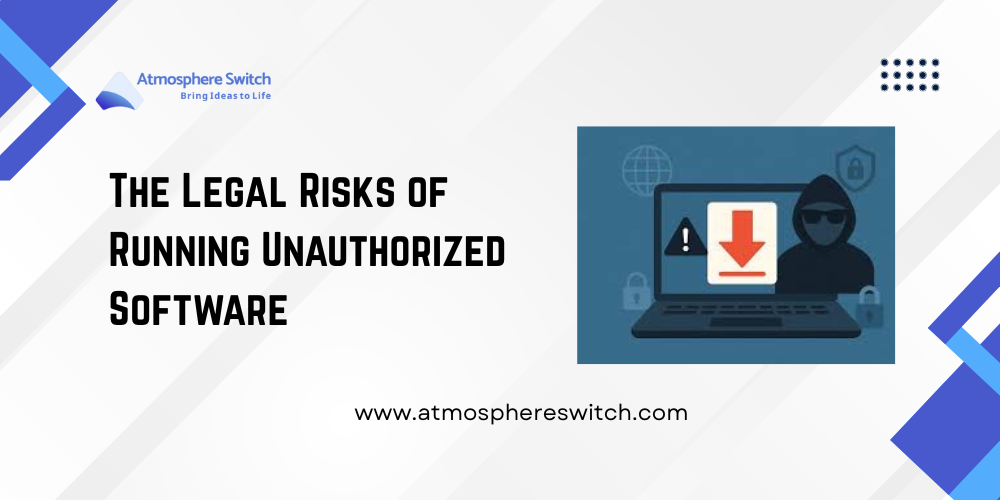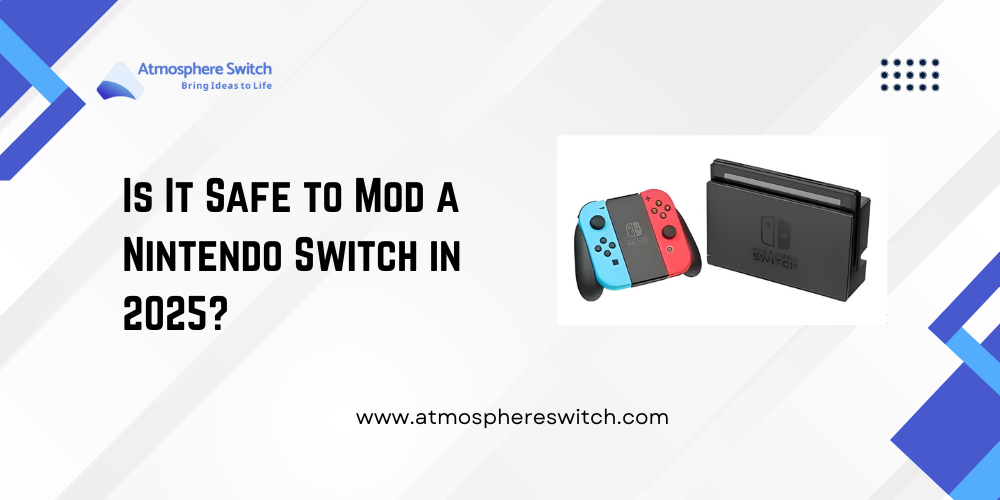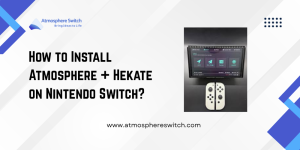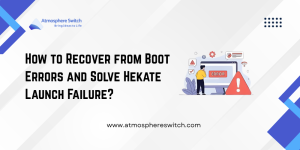Table of Contents
ToggleIntroduction
Welcome, fellow gamers and tech enthusiasts! For years, the Nintendo Switch has been a darling of the homebrew community, opening doors to advanced Emulation, customization, and a whole universe of third-party software. But as we move deeper into 2025, the risk-reward calculation for modding a Switch has shifted dramatically.
As an expert in Emulation and system modification, I can tell you that the fundamental question is no longer how to mod, but is it safe? The consequences are more severe and explicitly defined than ever before. If you are considering hacking your Switch, you must first understand the strict countermeasures deployed by Nintendo.
Nintendo’s New Stance: The “Permanently Unusable” Warning
The biggest change in the 2025 landscape comes directly from Nintendo’s updated User Account Agreement. Nintendo is now using explicit and stern language, warning users that violating the terms (which include running unauthorized software, modding, or bypassing protections) could result in the company rendering the console “permanently unusable in whole or in part.”
This is a clear, unambiguous escalation from previous warnings about simple online account bans. This new policy signals Nintendo’s increased resolve to fight piracy and unauthorized modifications, possibly even implementing remote hardware bans that turn the device into an “expensive paperweight.”
The Core Trade-off: Benefits vs. Permanent Bans (The “Brick”)
Modding offers incredible freedom—from running full Linux or Android operating systems to playing older console titles through Emulation. However, that freedom comes at the cost of official support and, potentially, the device itself.
| Risk Category | Consequence | Impact |
| Online Risk | Immediate Account and Console Ban from Nintendo Network. | Loss of eShop access, inability to play legitimate games online. |
| Hardware Risk | Console rendered permanently unusable (“Bricked”). | The Switch becomes useless, regardless of your intent. |
| Legal Risk | Potential legal action against users distributing modified works. | Direct legal trouble, though Nintendo usually targets distributors, not end-users. |
The decision to mod today requires accepting the non-zero chance that the device you paid for could be unilaterally disabled by the manufacturer.
Understanding the Technical Safety Measures
For those who choose to proceed, the key to minimizing risk lies in meticulously separating your legitimate, online activities from your custom firmware (CFW) activities. This separation is handled by technical measures pioneered by the homebrew community.
Emunand vs. Sysnand: Creating an Isolated Environment
This is the single most important safety step in modern Switch modding.
- Sysnand (System NAND): This is the original, official internal memory of your Switch. This is where the official Nintendo firmware (OFW) lives.
- Emunand (Emulated NAND): This is a complete, separate copy of the Switch’s operating system (OS) that lives on your MicroSD card. It is entirely isolated from the Sysnand.
The Safety Procedure: You run your Custom Firmware (CFW) and all unauthorized software (including Emulation and homebrew) exclusively on the Emunand. You keep the Sysnand completely clean and only use it for playing legitimate games online and accessing the Nintendo eShop. Since the Emunand is an isolated sandbox, the risks associated with modding are theoretically contained away from the official system partition.
The Role of Stealth Measures (DNS/MitM): Blocking Nintendo Servers
Even with an Emunand, there’s a risk of the CFW attempting to connect to Nintendo’s servers. The community uses stealth methods to block this communication:
- DNS Blocking: Using specialized custom DNS settings (like 90DNS) that reroute any Nintendo traffic to non-existent servers. This is your first line of defense.
- MitM (Man-in-the-Middle) Files: Custom files (like those used with the Atmosphere CFW) that actively intercept and block attempts by the CFW to report telemetry data back to Nintendo.
Crucial Point: These methods are only as good as the community maintaining them. Nintendo is constantly updating its telemetry, so these patches need constant vigilance. Never connect to the internet while in CFW/Emunand unless you are absolutely certain your stealth mechanisms are active and up-to-date.
Hardware Vulnerability Check: Is Your Switch Moddable?
Not all Switch models are created equal when it comes to modding safety and complexity.
- V1 (Unpatched) Consoles: These early models have a hardware exploit (the RCM vulnerability) that allows them to be “soft-modded” relatively easily, using only a computer and a jig. This is the simplest and safest path, as it relies on an inherent hardware flaw.
- V2, Lite, and OLED Consoles: These models are “patched” and require a mod chip (like the SX Core or Picofly) to be soldered onto the mainboard. This is significantly more complex, requires advanced technical skill, and carries the risk of permanently damaging the console during installation.
The Safety Check: Before you begin, check your console’s serial number against online databases to confirm if you have an unpatched V1 model. If you have a patched model, you must weigh the substantial risk of physical damage (bricking) during chip installation.
The Consequences: What Can Nintendo Actually Do?
Understanding the technical defense is one thing; understanding Nintendo’s offense is another. Nintendo’s measures are sophisticated and target two distinct areas: online service access and hardware function.
Hardware ID Bans and the “Expensive Paperweight”
When you access Nintendo’s servers with a modded Switch, the system reports its unique Hardware ID (HAC-001). If Nintendo detects suspicious activity (like playing a game that hasn’t been officially released or having mismatched telemetry data), they issue an online ban.
- The Traditional Ban: Your user account and the console’s Hardware ID are banned from the Nintendo Network. This is a soft ban; the console still works offline for legitimate cartridge games and Homebrew.
- The 2025 Policy Escalation: The new policy suggests Nintendo may reserve the right to deploy a remote kill-switch, truly “bricking” the device. While this is legally questionable, the explicit warning is a major deterrent.

The Legal Risks of Running Unauthorized Software
While the average user playing single-player Emulation games is generally ignored, the legal risk is aimed squarely at the distribution network.
- Sharing is Riskier: Creating and distributing game backups, modified game files (ROMs), or paid homebrew apps exposes you to significant legal consequences. Nintendo has historically pursued large financial judgments against distributors.
- The User-End Gray Area: Running pirated software is, by definition, unauthorized use. While Nintendo prefers the technical ban, participating in the ecosystem that distributes unauthorized copies carries an inherent legal risk, even if remote.
The Risk of Future Firmware Updates (Fuse Burning)
The Nintendo Switch uses a physical anti-downgrade mechanism known as eFuses.
- How it Works: Each major firmware update “burns” a physical fuse on the motherboard. When the Switch boots up, it checks the number of burned fuses against the firmware version it is running.
- The Risk: If you attempt to downgrade your console to an older official firmware (OFW) version, the fuse count will not match, and the console will refuse to boot (a hard brick). CFW solutions like Atmosphere Switch manage this carefully, but a mistake or a rushed update can lead to permanent damage if you attempt to boot back into OFW incorrectly. This is a technical, self-inflicted risk unique to modding.
The Homebrew Paradise: Why Users Still Mod
Despite the intense risks in 2025, the community continues to grow because the unlocked potential of the Switch is immense.
Emulation and Expanded Gaming Libraries
The most compelling reason to mod is the access it provides to gaming history:
- Retro Emulation: The Switch becomes a portable emulation powerhouse, capable of running games from SNES, N64, GameCube, and even older consoles, far surpassing the official Nintendo Online retro offerings.
- Switch Library Backups: Users gain the ability to create backups of games they own, protecting expensive digital licenses and cartridges from damage. This also allows for faster game loading via the MicroSD card.
Customization, Backups, and Linux/Android Functionality
Modding transcends simple gaming:
- Custom OS: Installing custom operating systems like Linux or Android turns the Switch into a fully functional tablet. This allows for web browsing, media streaming, and access to Android’s app ecosystem.
- Save Management: Users gain control over their save files, allowing for easy backups, transfers, and file manipulation.
- Overclocking: Custom firmware allows users to overclock the Switch’s CPU and GPU, boosting frame rates and performance in demanding games that struggled on the stock hardware.
Conclusion:
Modding a Nintendo Switch in 2025 is less a question of “can I” and more a question of “can I accept the consequences?”
The safety of modding hinges entirely on isolation. If you have an unpatched V1 model and strictly follow the Emunand approach never connecting your modded partition to Nintendo’s servers and only using your clean Sysnand for online play the risk remains manageable, albeit present.
However, Nintendo’s explicit warning about rendering the device “permanently unusable” is a game-changer. If the loss of a $300-$400 device is a financial risk you cannot accept, or if you rely heavily on the Nintendo Network and eShop, the answer is clear: do not mod your Switch.
For those willing to accept the high-stakes trade-off for the unprecedented freedom of Emulation, customization, and Linux/Android functionality, the rewards are still substantial—but you proceed with eyes wide open to the possibility of a permanent ban.
FAQs
Does modding my Switch make my legitimate games unplayable?
No, not if done correctly. By running your Custom Firmware (CFW) and Emulation exclusively on a separate Emunand, your Sysnand (where your legitimate games and purchases reside) remains clean. You can boot into the clean Sysnand and play your cartridge or digital games online without issue, provided the Emunand activity has not already triggered a ban.
How does Nintendo detect a modded Switch?
Nintendo does not ban for the mere presence of CFW. They ban for misbehavior detected via telemetry when the console connects to their servers. This includes:
- Playing a game (even legitimately owned) that hasn’t been officially released yet.
- Having mismatched play data (e.g., logging thousands of hours on a game instantly).
- Attempting to access the eShop or download updates while running CFW.
What is the “best” and safest Custom Firmware (CFW) to use in 2025?
The current consensus for safety and reliability is Atmosphere. It is open-source, constantly maintained, and uses the best stealth methods (like built-in MitM patching) to keep the CFW environment isolated from Nintendo’s servers, which is crucial for safe Emulation and homebrew use.
I have a V2 or OLED Switch. Is it safe to install a mod chip?
The main safety risk for V2/OLED Switches is the physical installation. It requires micro-soldering and high precision. While the resulting Emunand setup offers the same technical safety as a V1, the initial hardware modification carries a high risk of permanently damaging (bricking) the device due to soldering errors. This should only be attempted by skilled professionals.
Latest Post:
- How to Install Atmosphere + Hekate on Nintendo Switch (Step-by-Step Guide)
- Is It Safe to Mod a Nintendo Switch in 2025?
- EmuMMC vs SysNAND: Which Setup Is Best for Nintendo Switch Modding?
- How to Recover from Boot Errors / Hekate Launch Failure
- Why Ambient Intelligence Is the Next Frontier in Smart Homes









